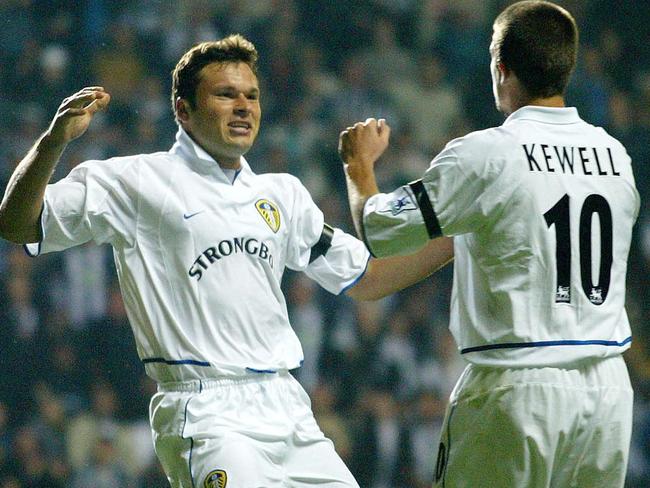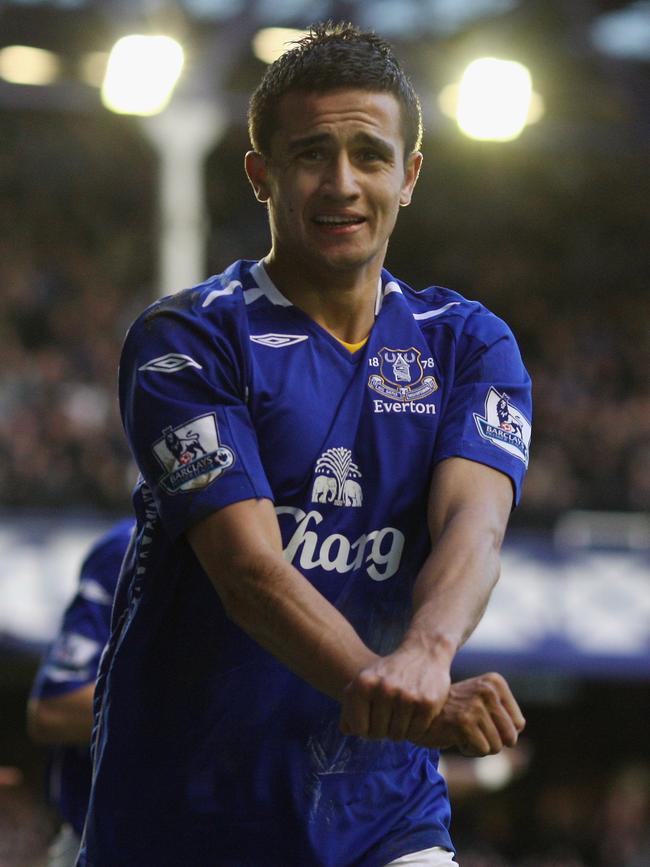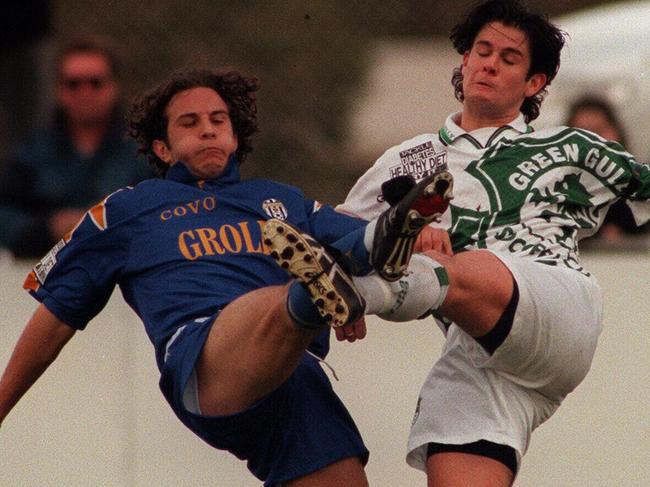Socceroos golden generation report should flip Australia’s youth development system on its head
The report into the Socceroos golden generation has the potential to change the face of Australian football - but the game must act accordingly or risk a doomsday scenario, writes DAVID DAVUTOVIC.

Football
Don't miss out on the headlines from Football. Followed categories will be added to My News.
This groundbreaking report into the Socceroos golden generation has the potential to change the face of Australian football.
If history is anything to go by, the report will go into the bottom drawer (or email bin) of Australian football chiefs.
Coupled with the players’ union’s 2017 player pathway study, the grim realities of Australia’s elite player pathway are now crystal clear (an 80 per cent reduction in match minutes of Australians across the big five leagues of Europe from 2005 to 2015, while professional match minutes played by under 20 players have more than halved since 2011-12).
Stream the FFA Cup Final LIVE & On-Demand on KAYO SPORTS. Get your 14 day free trial & start streaming instantly >

Australian football can tackle the issue head on, or dig its collective heads in the sand and wait for an inevitable doomsday scenario - like failing to qualify for a FIFA World Cup - before being ‘forced’ into action.
Titled ‘Culture Amplifies Talent: Building a Framework for Golden Generations’, the 62-page report is a must read for aspiring professionals and/or parents of talented kids, plus anyone involved at clubs and the elite talent pathway.
It should also prompt serious reflection on the youth development systems and league structures implemented by Football Federation Australia and the state federations.
The role and scope of the FFA technical director should also be reviewed in the wake of this report.
Done in conjunction with Victoria University, there were no preconceived hypotheses upon entering the interviews with 17 of the golden generation - spanning between Paul Okon (born 1972) and Nathan Burns (1988) - but the consistencies between stories were uncanny and in many cases literal.
The study identified six key themes among the golden generation:
- Passion: Falling in love with the game
- Family: Support and sacrifices
- Mentality: Work ethic and overcoming setbacks
- Environment: Regularly kicking a ball
- Practice: Free play and structured training
- Pathway: Playing up an age group

Everyone will draw their own conclusions from this report - I believe it turns FFA’s developmental philosophy on its head.
Most of the golden generation played for one junior club, usually debuting for the senior team before progressing - be it state league or NSL.
FFA and the some state federations have strategically shifted the power base from the clubs - including many golden generation talent factories - over the past 15 years and attempted to “manufacture” elite pathways.
The study, which also interviewed five current talented teenagers for context, indicates that the current crop of kids leave “clubs” at the age of 10 and become “club hoppers”.

PERSONAL EXPERIENCE
My junior club Chelsea Hajduk (now Dandenong City) had a golden generation of its own back in the day, producing Socceroos Ljubo Milicevic, Eugene Galekovic, Australian youth international Anthony Pelikan, National Soccer League and A-League players Antun Kovacic, Joey Rajher, Dario Matkovic, Boris Ovcin and youth stars Ivan Gelemanovic, Ivica Klarica and Ivan Klarica.

For most to was their first club and they only moved on from around 14 to move to NSL club Melbourne Knights - who everyone watched on a weekend and aspired to play for - or talented junior clubs like Bulleen and Box Hill.
A club like Dandy (Chelsea) is at the heart of this research. It formed as an important social connector for immigrants like my parents, who arrived from Croatia in 1970, and a “holistic experience rather than merely football tuition” according to the report.
Football benefited from the “social lubricant” these clubs created, for league games (with results and ladders from the youngest of ages) were followed by another two hours kicking the ball around while the parents socialised over folk songs and good food (barbecue or a lamb on the spit for big occasions).
I was involved with Dandy City’s football program when Football Federation Victoria hurriedly forced the NPL system on clubs in 2014, and our club was one of many that had to release kids whose families had been involved for years and decades in some cases.
The NPL system - which entails yearly trials - forces clubs like Dandenong City to regularly turnover players for “better” talent. Some kids literally change clubs every year.
Competition is heightened, parents are anxious and few friendships of substance are formed. And how many of those players actually become professional?

Rising federation registration and coach education fees sees kids charged anywhere from $1200-2500 per year depending on the club.
Then football wonders why they struggle to connect the massive participation base to the top end.
Back in my day, there was always room to sneak in the slow, weak, chubby (that was me) kids - or the one who’s dad marks the lines or cooks the barbecue.
The technical boffins have declared this is counter-productive to development. Within reason, one could strongly argue otherwise, based on this report.
Two weeks ago, Dandenong City hosted the 45th annual Australian-Croatian Soccer Tournament, a four-day event attended by between 15,000-20,000 people with the kitchen, bar and barbecues staffed by people who’ve been connected with the club for decades - including my parents.
Some prominent Australian football figures including Tony Popovic, Josip Skoko, Zeljko Kalac, Mark Rudan, Josip Biskic, Tom Pondeljak, Frank Juric, Zeljko Susa and Didulica attended.
For many of them, it was a trip down memory lane, reconnecting with childhood friends and teammates and retracing their steps into professional football and, in many cases, Australia’s national teams and Socceroos.
THE FUTURE (ON THE FIELD)
The PFA pointed out that this was not a solution. But it did recommend carving a new cultural path for the game rather than recreating history.
The report states that the golden generation was a moment in time we over-achieved.
“The stars aligned to create special conditions and players. We have not failed since then, we have regressed to the mean,’’ it reads.
“There is little doubt the golden generation existed in a cultural environment which was set up to produce internationally competitive players.”

While most of the golden generation emanated from middle-class European backgrounds, they were also involved in other sports like Aussie Rules, NRL, cricket and basketball for longer (average age 14) than the current crop, the study found. Currently, players are encouraged on a single focus from early on.
Socceroos great John Aloisi said the Centre Of Excellence’s and many other academies assess players too early.
“They’re discussions we have to have. If you’re not in the pathway, you get lost - everyone’s got different make up and developed at different stages,” Aloisi said.
“We have lost that ability to find goalscoring strikers - I’m not blaming the curriculum because there’s a lot of good things about it - but sometimes we are too quick to judge players because he doesn’t hit the ball with both feet,. But can he score a goal? Can he defend? Can he head a ball?”

While there has been a recent surge in private and overseas academies, only two of the golden generation players interviewed visited overseas academies.
The report also cited that critical mass of players was not an issue (Australia has 531,000 registered players 14 and under), but it was about cultivating the existing crop.
Most critical was putting kids at the middle of the discussion when attempting to find solutions.

THE FUTURE (OFF THE FIELD)
It begs the question, why is Football Federation Australia not conducting such studies?
It also underlines the PFA as Australian football’s peak intellectual body, dating back to the Australian Premier League study of 2004 (commissioned by then chief executive Brendan Schwab) which provided a key framework for the A-League, not to mention their trailblazing union work dating back to the ‘90s.

It is little surprise that three of the top contenders to replace David Gallop as FFA chief executive emanate from the PFA.
Didulica, who instigated the report, is among the candidates sounded out, while Schwab, the executive director of the World Players Association is a strong contender.
Another PFA product, FIFA’s former head of professional football and current City Football Group senior vice-president James Johnson, has also emerged as a front-runner.
Reports like this - and the sensational ’60 and 60’ document for women’s football, highlights the kind of vision and intellect required at head office to navigate Australian football through a challenging new era, after losing control of their $80 million cash cow, the A-League.
Football is different to other sporting codes AFL, NRL, Cricket and Union - and lets not forget that the round-ball code was an Australian sports trailblazer, becoming the first truly national competition in 1987, well before the AFL and NRL.
It’s now time to work out where the game wants to be on a global scale (forget about “competing” with “rival” Australian codes) and, like this report, reverse engineer to return Australia to prominence on the world stage.
